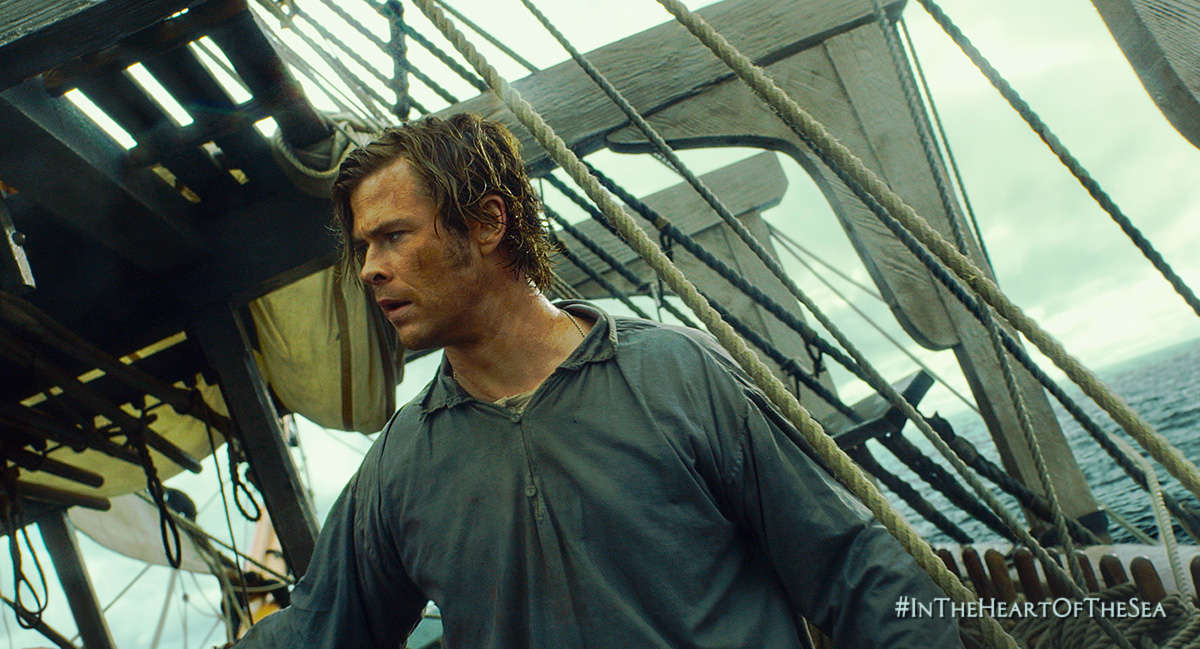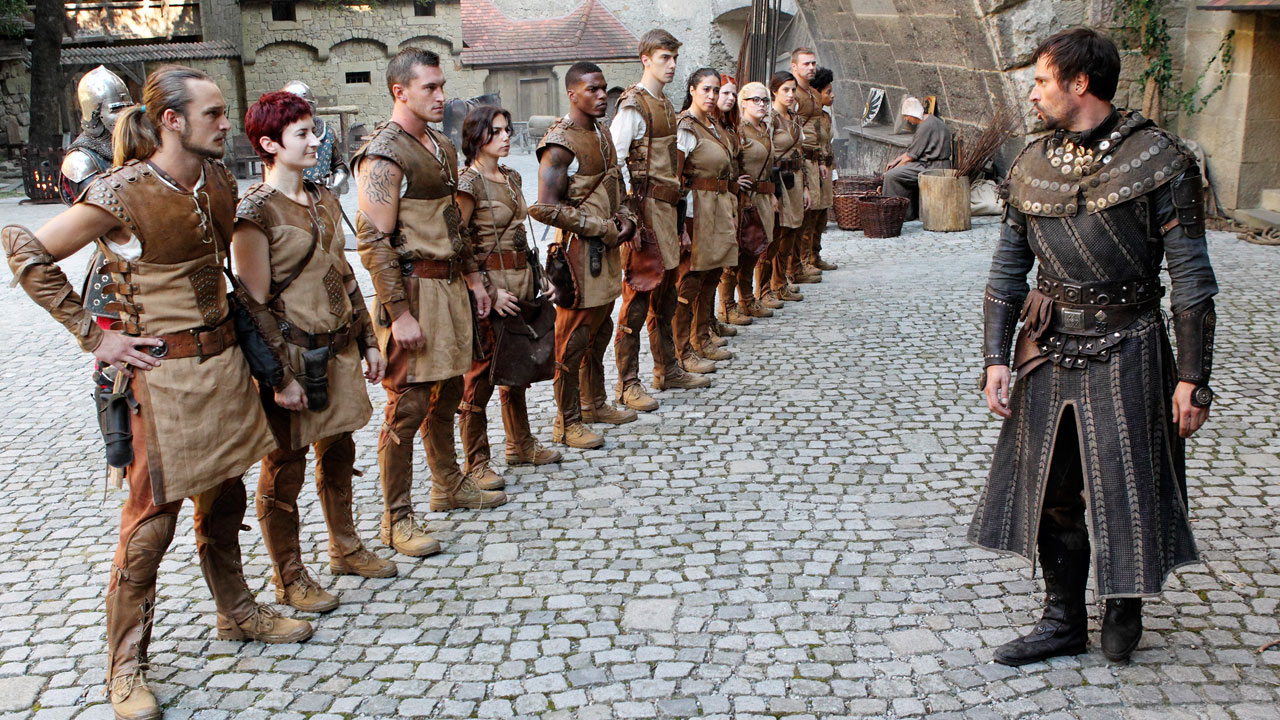Chris Hemsworth stars as Essex First Mate Owen Chase in Ron Howard’s “In the Heart of the Sea,” a film about the true story that inspired Melville’s “Moby Dick.” Hemsworth has been more enthusiastic about comedy lately, but when he does drama, it’s time pack your bags for a vacation to Feelsville. (Don’t forget to bring tissues.)
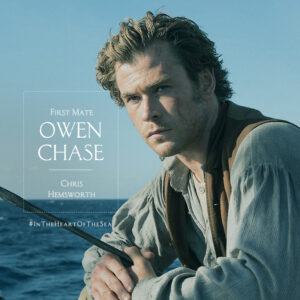 A long time Hemsworth fan, I’ve always wanted to see him in a historical drama.
A long time Hemsworth fan, I’ve always wanted to see him in a historical drama.
During my first “Thor” viewing, I not-so-fondly recalled the actor as “that asshole who made me cry at the very beginning of the ‘Star Trek’ movie,” because that’s exactly how I remembered him. I cried again when an incarcerated Thor teared up while speaking to Loki (Tom Hiddleston) about his father.
In “In the Heart of the Sea,” Hemsworth’s character garners empathy from the start – a father-to-be very much in love, Chase is the guy you want to root for from the start.
Yep. Ready the tissues. Here he is again being all amazing, promising his love he will return. But will he?
Note: This review is spoiler light.
Nerds of Literature, Rejoice!
The story is told by Thomas Nicholson (Benjamin Gleeson), an older man who reluctantly recounts his tale to “Moby Dick” author Herman Melville (Ben Whishaw). As Nicholson was a boy on his first whaling expedition, we learn along with his character throughout the telling.
Melville reveals a few other details of his life and he and Nicholson also speak of author Nathaniel Hawthorne. It’s an English major’s delight.
About Killing Whales…
As contemporary viewers, it’s impossible to divorce ourselves from the reality of whale hunting and other problematic aspects of the era. The film subtly addresses these issues without detracting from the plot. When it comes to the brutality of whaling, young Nicholson’s observations are enough to get the point across.
Later, when Owen Chase faces off against the white whale, we get the clear sense that the whale is protecting his kind rather than being bloodthirsty.
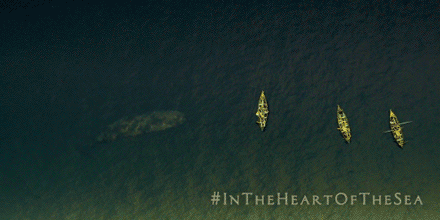
Additionally, the film presents and condemns the nature of the whale oil industry and surrounding politics. It’s also clear that the corruption, in the opinion of the writer, clearly extends to modern day – though it’s a side note towards the end and entwined with the notion that the individuals aren’t necessarily bad, but the system is.
This is the type of movie that will make you think about issues without necessarily making you uncomfortable if you benefit from the establishment. And if you don’t have all the privileges, you might be left with a more sinking feeling.
Women and Relationships
Chase is a happily married man, and his strong wife Peggy (Charlotte Riley) is no pushover (that archetype is often reinforced in Howard’s work). We learn early on that Peggy’s pregnant; her husband expresses hopefully that he thinks the baby will be a girl.
I’m not sure whether healthy relationships and girl-positive attitudes were really all that frequent back then, but it does help a contemporary feminist connect with Chase early on. You get the feeling that the story is about the whale hunting and that Chase is an exception to the rule in terms of how men treat women (a few of the other sailors do stereotypically lewd things).
The way some topics are alluded to but not directly addressed strongly reminded me of Howard’s “Far and Away,” one of his earlier films (and also a favorite of mine – well-intentioned despite tropes).
Another performance to mention is Michelle Fairley as Mrs. Nicholson. This role could have been interpreted and executed as a dutiful and observant wife, but Fairley makes her character’s purpose known, especially with nonverbal cues. She also represents the wives of whalers and sailors who have taken on more than an equal share in terms of supporting a family emotionally and financially.
More Information Required
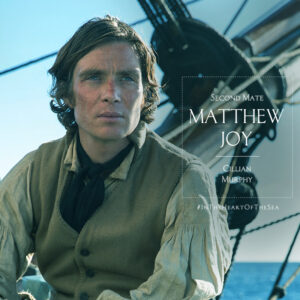 I remain curious about some Essex crew members and their roles and relationships. As the film takes place in 1820, I wasn’t sure whether the black men on the ship were slaves or free men. Additionally, I wasn’t sure about the status quo as far as how men were to address each other, so that didn’t really help me navigate the issue, either.
I remain curious about some Essex crew members and their roles and relationships. As the film takes place in 1820, I wasn’t sure whether the black men on the ship were slaves or free men. Additionally, I wasn’t sure about the status quo as far as how men were to address each other, so that didn’t really help me navigate the issue, either.
Chase’s relationship with Matthew Joy (Cillian Murphy) is certainly brotherly, but we don’t get much background on how they became such close friends aside from the fact that they’d been whaling together in the past.
Murphy is another stand out actor. He and Hemsworth are both excellent at tugging the heart strings when it comes to that brotherly relationship (see Murphy’s work in “The Wind That Shakes the Barley” and Hemsworth with Hiddleston in “Thor”). Their talents in this area were underutilized.
Some of this missing info makes me eager for a director’s cut and commentary. I’d like to see some interviews with Howard go beyond the basics of filming at sea and limiting his actors’ diets.
So…It Gets Very Dark
This film gets really dark. Obviously, some crewmen live to tell the tale, and even the regular dangers of whaling presented in the beginning of the story indicate that not everyone will return. However, you should be prepared for some pretty gruesome content – it’s not quite on the level of “Game of Thrones” or “Vikings,” though, when it comes to graphic violence.
The tension between Chase and Captain Pollard (Benjamin Walker) is exciting and escalated at the beginning of the movie (so much that I thought the subtitle of the film could be “Toxic Masculinity in the 19th Century”), and I thought the real darkness in the story would come as a result of that. But it didn’t. It was rather anticlimactic.
Cinematography
The cinematography of “In the Heart of the Sea” was both artistic and practical, especially when it came to the Essex. Cetology (study of whales) and seamanship took Melville lengths to describe, but in the film it was very clear how things were done.
You quickly learn about the mechanics of the ship and rowboats, harpooning, food storage, oil, and disgustingly enough, how they actually got the blubber out of the whale.
Despite some dangerous and harrowing scenes, there wasn’t any ‘shaky cam.’ That would have been disastrous, combined with the rocking of the ship and the splashing of the sea. Instead, the director used the events, natural colors, and details of the ship to convey feelings like panic and calm.
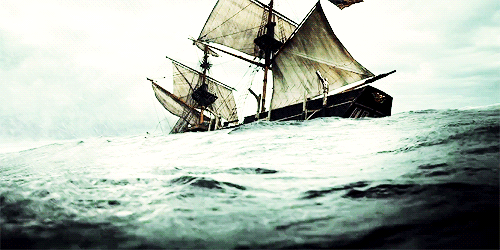 I watched the 3D version, which wasn’t really necessary or awe-inspiring, but it wasn’t annoying, either.
I watched the 3D version, which wasn’t really necessary or awe-inspiring, but it wasn’t annoying, either.
The visual of Nantucket and the differences in the socio-economic classes as well as the presence of prayers and industry make a very visceral, gritty setting.
Score
I was surprised there weren’t shanties and whaling songs. My inner bard was ready! Also, Chris Hemsworth is really adorable when he sings:
I digress.
The score itself was not especially memorable, but did emphasize certain points throughout the film. When the men kill their first whale, they celebrate – but the music makes it clear that what they’re doing, in the grand scheme of things, is very sad.
Storytelling
“In the Heart of the Sea” is a story within a story, but not simply as a device in itself. We cut back to the older Nicholson and Melville during strategic points: to summarize uneventful days at sea that would otherwise drag the story down, to describe vile acts without graphically depicting them, and to see why Melville himself might have been inspired. It’s definitely something any writer will appreciate.
Have you seen the film? Let me know what you thought about it in the comments.
Images from In the Heart of the Sea tumblr.

